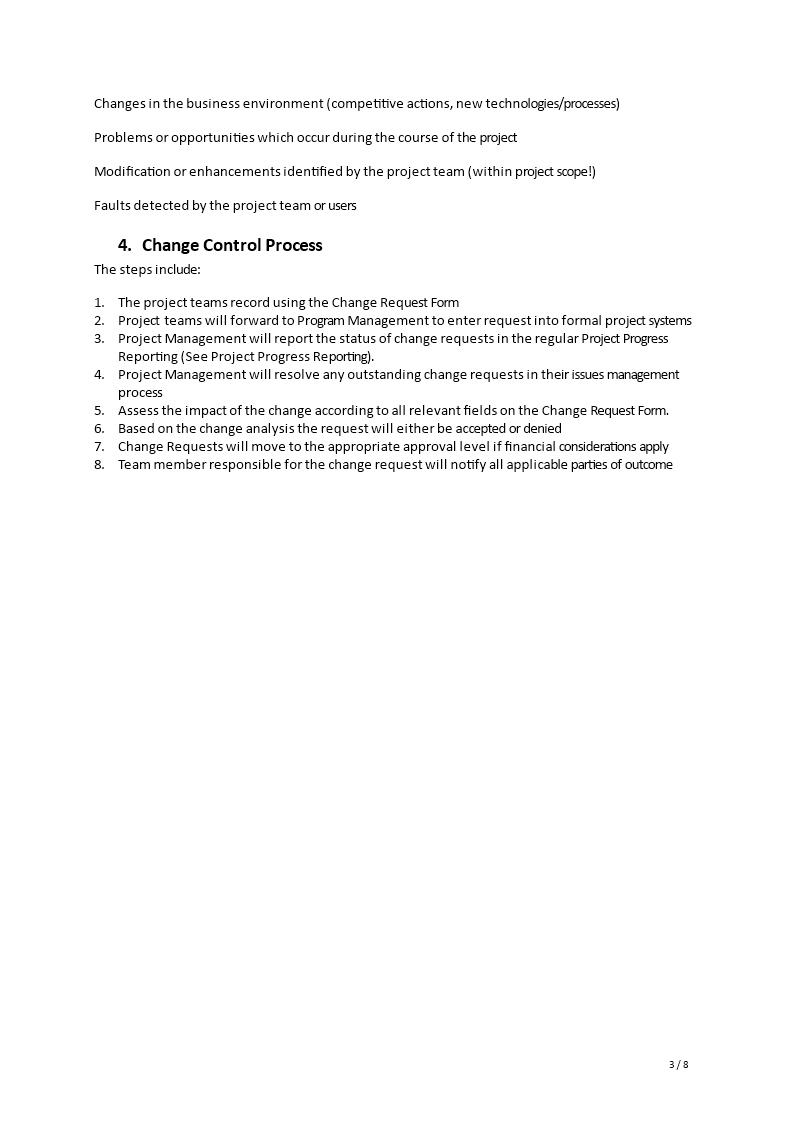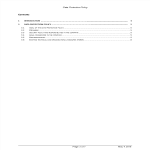ITIL Change Control Procedure Template

Enregistrer, Remplir les champs vides, Imprimer, Terminer!
What constitutes the ITIL process for managing changes? Why is the ITIL change management process important? Download our template which is designed to help organizations quickly and easily create a comprehensive ITIL Change Control Procedure.
Prix: USD 4.99
Téléchargez-le maintenant

Formats de fichiers premium disponibles:
.docx- Ce document a été certifié par un professionnel
- 100% personnalisable
ITIL Compliance Conformité
What constitutes the ITIL process for managing changes? Why is the ITIL change management process important? Download our template which is designed to help organizations quickly and easily create a comprehensive ITIL Change Control Procedure. It covers all the important steps in the process, from creating the request to approving the change to tracking its progress. Get this template now!
An ITIL Change Control Procedure, also known as a Change Control Process in the context of the Information Technology Infrastructure Library (ITIL), is a set of structured and standardized steps and guidelines used by organizations to manage and control changes to their IT systems and services. The goal of this procedure is to ensure that changes are implemented in a way that minimizes risks and disruptions to IT services while maximizing the benefits of the change. ITIL is a framework that provides best practices for IT service management, including change management.
Key elements of an ITIL Change Control Procedure typically include:
- Request for Change (RFC): The process begins when someone identifies the need for a change, often in the form of an RFC. The RFC describes the proposed change, its purpose, the expected benefits, and any potential risks.
- Change Evaluation: The RFC is then evaluated by a Change Advisory Board (CAB) or a Change Manager. They assess the impact of the change on IT services, security, compliance, and other relevant factors.
- Change Approval: Based on the evaluation, the CAB or Change Manager decides whether to approve, reject, or defer the change. If approved, they specify the conditions and constraints for implementing the change.
- Planning and Design: Detailed planning and design activities are undertaken to ensure the change is carried out smoothly. This includes defining the scope, resources, schedule, and potential rollback plans.
- Testing and Validation: Changes are often tested in a controlled environment to ensure they work as expected and do not negatively impact the production environment.
- Implementation: The change is executed according to the approved plan. During this phase, careful monitoring is done to detect any issues or deviations from the plan.
- Review and Documentation: After implementation, a post-implementation review is conducted to assess the success of the change. Documentation of the change, including any deviations or issues encountered, is essential.
- Closure: Once the change is deemed successful and stable, it is closed, and any necessary documentation is updated.
- Communication: Throughout the process, communication is essential. Stakeholders, including end-users, should be informed of the change, its schedule, and any potential impacts.
- Continuous Improvement: Lessons learned from the change control procedure are used to improve future change processes continually.
The ITIL Change Control Procedure helps organizations maintain the stability and reliability of their IT environments while allowing for necessary updates and improvements. It ensures that changes are well-planned, documented, and coordinated to minimize disruptions and mitigate risks.
Download this ITIL Change Control Procedure Template and use it to ensure that changes to IT services are managed in a controlled and standardized way. It also helps to ensure that changes are properly tested and documented prior to implementation. Finally, it helps to ensure that all stakeholders are aware of the changes being made.
AVERTISSEMENT
Rien sur ce site ne doit être considéré comme un avis juridique et aucune relation avocat-client n'est établie.
Si vous avez des questions ou des commentaires, n'hésitez pas à les poster ci-dessous.
